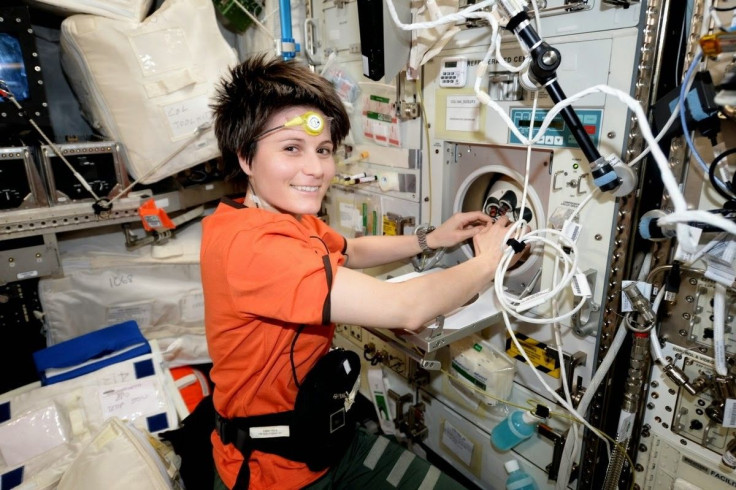Astronauts’ Circadian Rhythm On International Space Station Surprises Scientists

Our bodies have an internal clock, called the circadian rhythm, which is in sync with the 24-hour cycle of day and night. It is regulated by the body’s core temperature and is linked to sunlight, insofar as the core temperature is affected by sunlight. The rhythm itself triggers important bodily functions like metabolism and the sleep cycle.
Given the lack of sunlight in space, scientists predicted that astronauts aboard the International Space Station would find their circadian rhythms disrupted. But measurements of 10 astronauts’ core temperatures have surprised scientists, leading them to say “you can take the body out of Earth, you can’t take an Earth-based rhythm out of the body.”
Read: NASA’s ‘Genes In Space-3’ Program Will Identify Unknown Microbes In Space
The core temperature of the human body, when on Earth, is 37 degrees Celsius (98.6 degrees Fahrenheit). It decreases by half a degree early mornings and goes up by half a degree in the early evening. An experiment sponsored by the European Space Agency is looking at how this change varies in space.
“If our bodies are an orchestra, core body temperature is the conductor, signaling when hormones and other systemic functions should come into play,” Hanns-Christian Gunga of the University of Berlin, principle investigator of the experiment, explained the role of the core temperature in a statement Thursday.
The disruption of the circadian rhythm predicted by researchers theorized that the core temperatures of astronauts’ bodies would drop. Instead, measurements showed core body temperature increased overall. Also, the half-degree change in the temperature twice in 24 hours slowly shifted by two hours. This shows the body works harder and is, therefore, warmer to keep the circadian rhythm going. Researchers working on the experiment are not yet sure of why the shift in the triggers for bodily actions like metabolism and sleep occurs.
However, the experiment is important for the efficiency of astronauts in space. They take turns, working in shifts, and it is, therefore, necessary to understand how the circadian rhythm functions outside Earth’s environment, to ensure astronauts work and rest in sync with their internal clocks. The knowledge will also help plan longer missions while still keeping crews both efficient and healthy.
For the experiment, the 10 astronauts who participated measured their core temperatures for periods of 36 hours each, before, during and after spaceflight. The measurements were made using non-invasive sensors strapped to the forehead and chest. Two more astronauts — ESA’s Paolo Nespoli this year and Japanese astronaut Norishige Kanai in 2018 — will round out the participants. Researchers would have collected all the data from the experiment after that and will then analyze it to make more conclusions.
The research also has significance for people on Earth who work in shifts. Those who work at night or at other irregular hours also have their circadian rhythms disrupted, and this study could improve our understanding of how the body’s core temperature adapts to a changing internal clock.
© Copyright IBTimes 2024. All rights reserved.





















